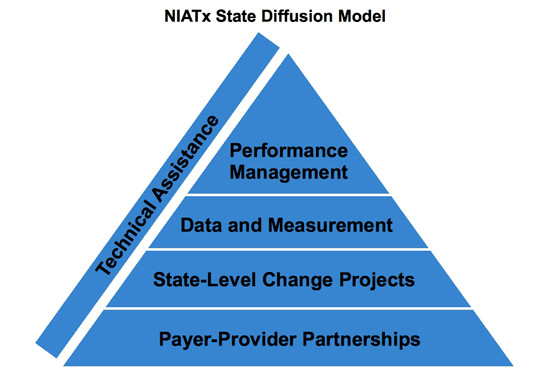Overview
The NIATx System-Level toolkit shares lessons that have emerged from the Strengthening Treatment Access and Retention-State Implementation (STAR-SI) program. Funded by the Substance Abuse and Mental Health Services Administration’s (SAMHSA) Center for Substance Abuse Treatment (CSAT) and The Robert Wood Johnson Foundation, STAR-SI is a NIATx-managed infrastructure cooperative agreement program that promotes state- and system-level implementation of process improvement methods to improve access to and retention in outpatient addiction treatment.
STAR-SI builds on the innovative work of the NIATx State Pilot Program to Improve Addiction Treatment. In this program, six state addiction treatment payers and providers worked in partnership to:
- Identify how states can exercise leadership roles to improve treatment quality
- Use demonstrated process improvement methods to design and test ways states and other payers can work with each other and with providers to improve treatment access and retention
- Document and disseminate innovative practices used by states and payers in collaboration with treatment providers to improve performance quality
Three key lessons emerged from the state pilot project that formed the foundation for the STAR-SI implementation model:
- Forming positive working relationships with treatment providers is vital
- Maintaining the relationships is critical
- Leadership “buy-in” is essential
These lessons led to the development of the NIATx State Diffusion Model, along with the identification of the roles of key players in a state implementation of process improvement.

This knowledge became the foundation of the STAR-SI program. We are pleased to share the key elements of successful system-wide process improvement in this toolkit.



